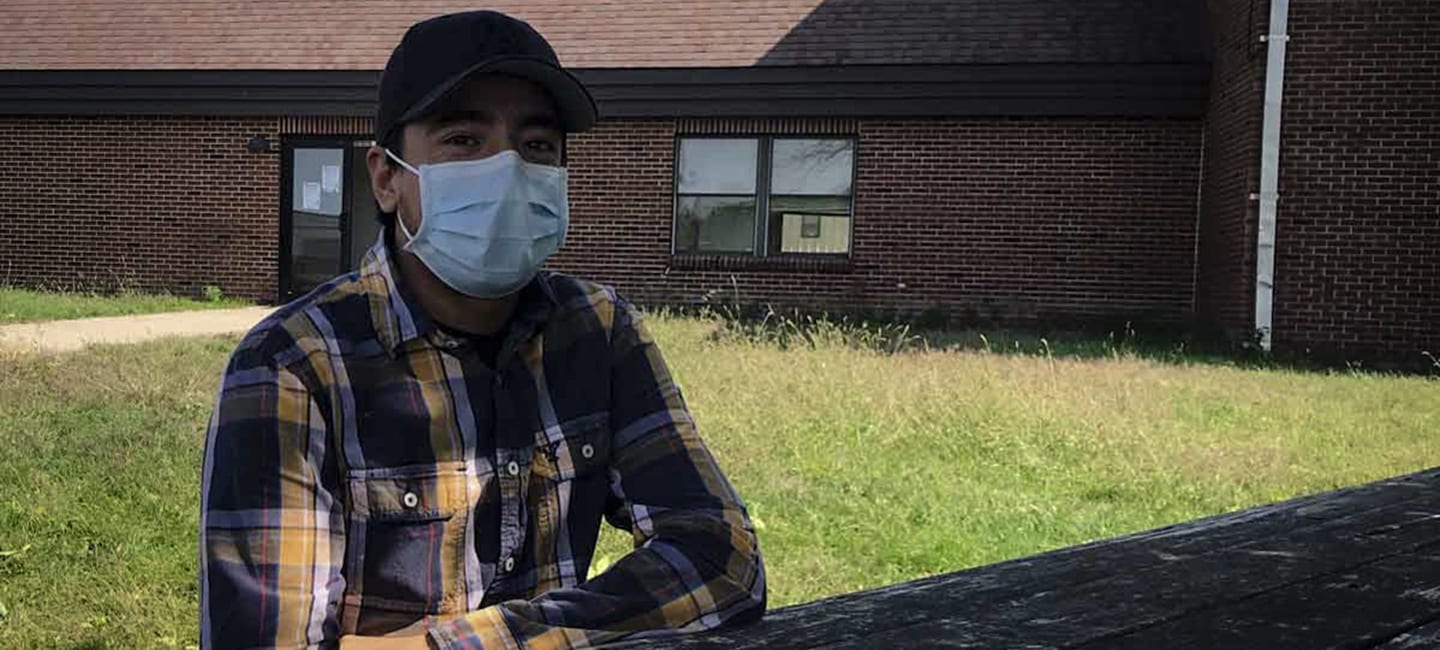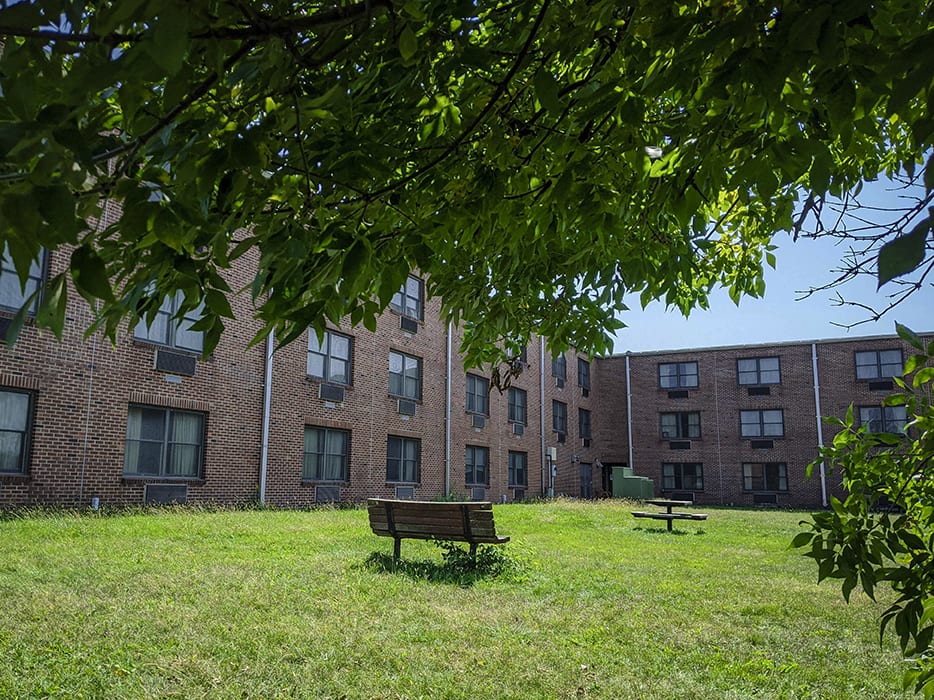
En las afueras de Rantoul, en el centro-este de Illinois, un centenar de trabajadores agrícolas inmigrantes viven en un viejo hotel de una zona tranquila de la ciudad.
Arriba: Samuel Gómez sentado en el hotel donde viven él y un centenar de trabajadores agrícolas migrantes. Dana Cronin/Sala de Prensa de Illinois
En las afueras de Rantoul, en el centro-este de Illinois, un centenar de trabajadores agrícolas inmigrantes viven en un viejo hotel de una zona tranquila de la ciudad.
Todos los días al amanecer, Samuel Gómez y el resto del equipo se someten a un control de temperatura antes de salir. La mayoría de los trabajadores, provistos de mascarillas, suben a un gran autobús escolar amarillo para un trayecto de 30 minutos hasta un gran almacén, donde pasarán el día clasificando el maíz que llega en grandes cintas transportadoras.
Gómez, que es mexicano, es uno de los pocos afortunados que tiene acceso a un coche, así que va a trabajar con su padre y su hermana. Lleva aquí todo el verano. Empezó en el campo arrancando maíz, es decir, eliminando plantas enfermas y fuera de tipo para mejorar la calidad de la cosecha. Desde septiembre trabaja en el almacén.
En Estados Unidos, se calcula que de dos a tres millones trabajadores agrícolas plantan, cultivan y cosechan cada año. Entre ellos hay trabajadores migrantes, como Gómez, que a menudo dejan atrás a su familia y amigos durante meses para encontrar un trabajo mejor pagado que el que podrían ganar en su país.
Las largas horas y las exigencias físicas hacen que el trabajo sea arriesgado cualquier año, pero la pandemia de coronavirus lo ha hecho aún más arriesgado. Los brotes epidémicos en las granjas de Estados Unidos preocupan a algunos por la falta de protección de los trabajadores, de los que depende la alimentación del país.

Todas las habitaciones de la primera planta de este hotel convertido en campamento de inmigrantes son habitaciones de cuarentena, reservadas para posibles casos de COVID-19. Christine Herman | Illinois Newsroom
No es el mismo aire que respiré la temporada pasada
Gómez, de 32 años, lleva cuatro años viajando a Illinois como trabajador inmigrante. Cuando trabaja en el almacén, dice que gana $12 la hora limpiando y desinfectando las instalaciones, aproximadamente el doble de lo que podría ganar trabajando en el comercio minorista en México.
Antes de llegar a Illinois en junio, no conocía a nadie que hubiera contraído el coronavirus, por lo que dice que no estaba demasiado preocupado.
"La verdad es que me sorprendía cuando la gente hablaba de ello... Era algo que no existía, hasta que me di cuenta de que sí", dice Gómez en español.
Desde junio, se han producido 21 casos de COVID-19 relacionados con el hotel en el que viven Gómez y toda una cuadrilla de trabajadores inmigrantes, según el Distrito de Salud Pública de Champaign-Urbana, que realiza un seguimiento de los casos de COVID-19 en todo el condado de Champaign. El hotel está empatado con tercer mayor brote en el condado, según datos internos de salud pública de todo el estado entre julio y septiembre obtenidos por el Midwest Center for Investigative Reporting.

